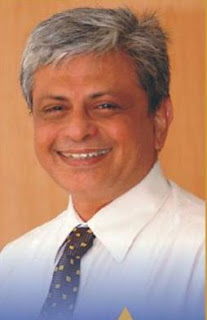The objectives of this short ten minute exercise -
- To learn a tool that will be helpful in work life
- To apply the tool within a few minutes of learning
- To use this as a morning ritual to start a great day
Step 1 - the warm up
Keep your journal and pen at hand
Sit in a relaxed position with an intent to go into a ‘flow state’ to learn something new
Take three deep, powerful breaths to lock in your focus and start the next step
Step 2 - the learning
About MBTI
The MBTI (Myers-Briggs Type Indicator) is a personality assessment tool used to understand individual differences in how people perceive the world and make decisions. Introduced in the 1940s by Katharine Cook Briggs and Isabel Briggs Myers, it is widely used in business for team building, leadership development, and personal growth.
The Myers-Briggs Type Indicator (MBTI) identifies 16 personality types based on preferences in four dichotomies viz. Extraversion (E) vs. Introversion (I), Sensing (S) vs. Intuition (N), Thinking (T) vs. Feeling (F) and Judging (J) vs. Perceiving (P)
Situations (examples) where this tool can be best used
- Leadership Development
- Team Building and Collaboration
- Recruitment and Onboarding
The top three mental muscles (competencies) developed by practicing this tool
- Self-Awareness - Recognizing personal strengths and areas for improvement
- Emotional Intelligence - Understanding and managing emotions to connect with others
- Empathy - Recognizing and valuing the perspectives and feelings of others
A corporate story to understand the usage of this tool
Evan Spiegel (Snapchat) story – Innovating digital communication through MBTI
Evan Spiegel, co-founder and CEO of Snapchat, has revolutionized digital communication through his visionary approach. Using the MBTI framework, Spiegel’s leadership style aligns with the ENTJ (The Commander) type, characterized by strategic thinking, decisiveness, and a drive for innovation.
Visionary Thinking (N): Spiegel identified a gap in social media for authentic, ephemeral communication, leading to Snapchat’s groundbreaking "Stories" feature, later adopted by major platforms.
Decisive Leadership (J): His bold decision to reject Facebook’s $3 billion acquisition offer reflects confidence in long-term goals over short-term gains.
Data-Driven Problem Solving (T): Innovations like Snap Map and AR filters showcase Spiegel’s focus on user data to enhance engagement.
Dynamic Communication (E): Spiegel’s ability to pitch his vision effectively attracted investors, partners, and top talent, fueling Snapchat’s growth.
Spiegel’s ENTJ traits of decisiveness and adaptability were evident when he used feedback to refine Snapchat’s redesign in 2018. His journey highlights the power of strategic vision, clear communication, and embracing challenges to drive innovation. Aspiring leaders can draw inspiration from Spiegel’s ability to think big, act decisively, and continuously adapt to changing landscapes.
A story from the World Wars
My personal story
Context
Once I was the Head of competencies for four countries - India, Czech Republic, Morocco and Philippines. Meetings with each country team was a challenge because of their different cultures. That is when I realised that I should study their cultures and behaviours first before rolling out the competency programme
I did not use MBTI then but was aware of the Lewis Model. Here’s how I could have mapped the teams using MBTI and leveraged it.
India - ESFJ - The Consul (high social skills and desire to help others)
Czech Republic - ISTP - The Virtuoso (respect their independence)
Morocco - ISFP - The Adventurer (offer autonomy)
Philippines - ESFP - The Performer (friendly and approachable)
Step 3 - the reflection
Sit back, go down memory lane, think of various events in your work life where you could have used this learning.
If nothing comes to mind, think of a situation that would help you answer any one of these interview questions.
- “Tell me about yourself” - Use your MBTI type to highlight strengths and preferences
- “What are your strengths and weaknesses?” - Identify these from the MBTI attributes viz. Extraversion (E) vs. Introversion (I), Sensing (S) vs. Intuition (N), Thinking (T) vs. Feeling (F), Judging (J) vs. Perceiving (P)
- “How do you adapt to change?” - Use your MBTI type to showcase your adaptability and approach to change. An example - If you are an ENTP (The Debater), your answer could start with - "I see change as an opportunity to explore new ideas and innovate. Let me explain this using my experience of … project …"
Step 4 - the practice
Apply your learning to the situation you selected above.
- Extraversion (E) vs. Introversion (I)
- Sensing (S) vs. Intuition (N)
- Thinking (T) vs. Feeling (F)
- Judging (J) vs. Perceiving (P)
Step 5 - the victory lap
Celebrate your achievement for a minute. Maybe a quick victory lap doing some energizing exercise?
**
To those who felt, “Many people are introduced to these concepts through theory, without the hands-on training needed for confident application.” - Do you feel that the last ten minutes were worth the effort?
I must tell you that some inspirational companies have institutionalised this tool (3M, Accenture, Apple, Cisco, Ernst & Young, Hewlett-Packard (HP))
This exercise is not only about management tools. It’s about building a neural pathway. And it’s about my mantra for creating small daily acts of feeling successful and happy.
Don’t forget to carry this image 👇 in your mind. There could be a great situation where you may want to use the tool. Keep a log of all such situations. This practice will help you when you want to train someone.
My congratulations for your first dose of the day of success and happiness. Have a great day ahead.

No comments:
Post a Comment